Maintaining optimal water parameters is paramount to the health and well-being of aquatic life. Among the most concerning issues is a spike in ammonia levels, a compound notorious for its lethality to fish. In this comprehensive guide, we detail the causes of high ammonia levels, de-mystifying the nitrogen cycle and common pitfalls that disrupt its delicate balance. Actionable steps are also outlined to promptly and effectively lower ammonia levels, from strategic water changes to the introduction of live nitrifying bacteria.

I find a spike in ammonia readings particularly disturbing since this compound can quickly kill or cause damage to aquatic inhabitants.
Therefore, in such moments it’s essential to know how to lower ammonia levels in your aquarium on time.
Naturally, replacing the polluted water with clean one may reduce said levels.
Nevertheless, partially lowering ammonia contents may not be sufficient to bring them down to a fish-safe level.
Providing your freshwater fish with a healthy environment has to do with keeping them in a fully cycled tank that has 0 ppm of ammonia and 0 ppm of nitrites.
In this guide, I will give you all the details on how to reduce ammonia spikes timely and completely remove this dangerous compound from your aquarium.
Furthermore, we’ll go over the causes of high ammonia levels so that you can keep your tank’s water parameters in check and your fish – happy.
So let’s dig in.
What causes the high ammonia levels in your aquarium?
In order to find the underlying cause behind the high ammonia levels in an aquarium, we’ll first have to take a look at how the nitrogen cycle works:
- Organic matter (e.g. fish feces, uneaten fish food, decaying plants, etc.) degrades to ammonia (NH3).
- Bacteria convert that ammonia to nitrites (NO2-). Both ammonia and nitrites are deadly to your fish, and nitrite more so to freshwater species.
- Another set of bacteria transform the nitrites into nitrates (NO3-).
Nitrate is relatively harmless to your aquarium’s inhabitants. Its levels are maintained within a healthy range through regular aquarium maintenance.
A cycled tank has enough established nitrifying bacterial colonies to keep the ammonia and nitrites inside at 0 ppm. Now that we cleared this out, it’s time to move on to the main question.
Having said that, there are a number of different reasons that could hamper beneficial bacteria’s ability to break down ammonia.
Here are the most common causes that typically lead to an ammonia spike:
- Overfeeding.
Many beginners tend to overestimate the dietary needs of their aquatic pets.
As a result of this, the uneaten food scraps end up at the bottom of the aquarium where they slowly get broken down into ammonia.
Most fish species should typically be fed no more than two times a day.
Some, however, can go with only a single meal a day.
Visit my article on how often you should feed pet fish to find out about yours.
- You recently added too many fish at once.
Another mistake I often see people make is they stock their aquarium with more fish than it can handle or place messy fish that pollute the water column. And this isn’t all that surprising since most beginners still rely on the “one-inch-of-fish per a gallon of water” rule.
Putting more than 10 small fish in a cycled 20-gallon aquarium all at once will likely overwhelm the bacteria in it. The biofilter won’t be able to handle the additional organic waste.
This will lead to an imbalance in the nitrogen cycle and subsequent spikes in toxic ammonia and nitrite levels. Adding new pet fish to your aquarium should be done gradually .
So keep in mind that overstocking an aquarium in a short time interval should be avoided.
- You cleaned the filters and substrate or changed them.
The beneficial bacteria responsible for the nitrogen cycle reside in the substrate and in the aquarium’s filter media. If you’ve cleaned the filter with tap water or you’ve changed for a new one, then you’ve essentially wiped out all of the beneficial bacteria.
- The aquarium isn’t fully cycled yet.
Ammonia spikes in new fish tanks occur often if the tank isn’t fully cycled. This is one of the most common reasons why fish would mysteriously keep dying in a new, uncycled tank.
- You don’t prune and remove dead leaves from a heavily planted tank.
Decaying plant matter, algae included, converts into ammonia.
- You added antibiotics to your tank to treat sick fish without removing the biological filter.
Antibiotics are harmful to beneficial bacteria, and will likely cause an imbalance in the nitrogen cycle.
- A fish has died but you haven’t removed its body from the tank yet.
When a fish dies its body starts decomposing. The decomposition releases copious amounts of ammonia. A dead fish gone unnoticed is often the reason behind elevated ammonia in cycled fish tanks.
- You’ve used tap water without dechlorinating it.
Chlorine and chloramine, used by water facilities to disinfect tap water, kill beneficial bacteria.
Performing a water change without using a de-chlorinator in advance may throw the nitrogen cycle off-balance and cause an abrupt spike in ammonia.
- You put ice in the water in an attempt to bring its temperature down on a hot summer day.
The abrupt temperature change may harm the bacteria.
- Your fish tank is under 10 gallons.
Keeping water parameters within the desired range is much more difficult when you maintain a smaller aquarium.
Unstable temperature and pH levels have a negative effect on the establishment of beneficial bacterial colonies. Furthermore, the addition of new fish or invertebrates in a small tank has a huge influence on the ammonia levels.
Even adding a single mystery snail can throw the nitrogen cycle off balance in such systems.
- You recently introduced plant fertilizers or aquarium soil to the system. Both plant fertilizers and aquasoils leach Nitrogen in the aquarium water since that’s what plants feed on.
How to promptly reduce ammonia levels in an aquarium?
Ammonia is a highly toxic byproduct of the decomposition of organic waste. Even small amounts of it can be extremely lethal to aquatic inhabitants in both freshwater and saltwater fish tanks.
It’s essential I point out that it’s impossible to keep your water parameters in check, without using a proper water testing kit.
Furthermore, throughout the process of bringing ammonia levels down and establishing a nitrogen cycle, you have to monitor whether you’re moving in the right direction daily. For this purpose, I recommend using an API Master liquid test kit for a saltwater and the one for a freshwater aquarium.


That being said, follow this step-by-step process to lower the high ammonia levels in your aquarium:
1. Change 30% of the water in the tank.
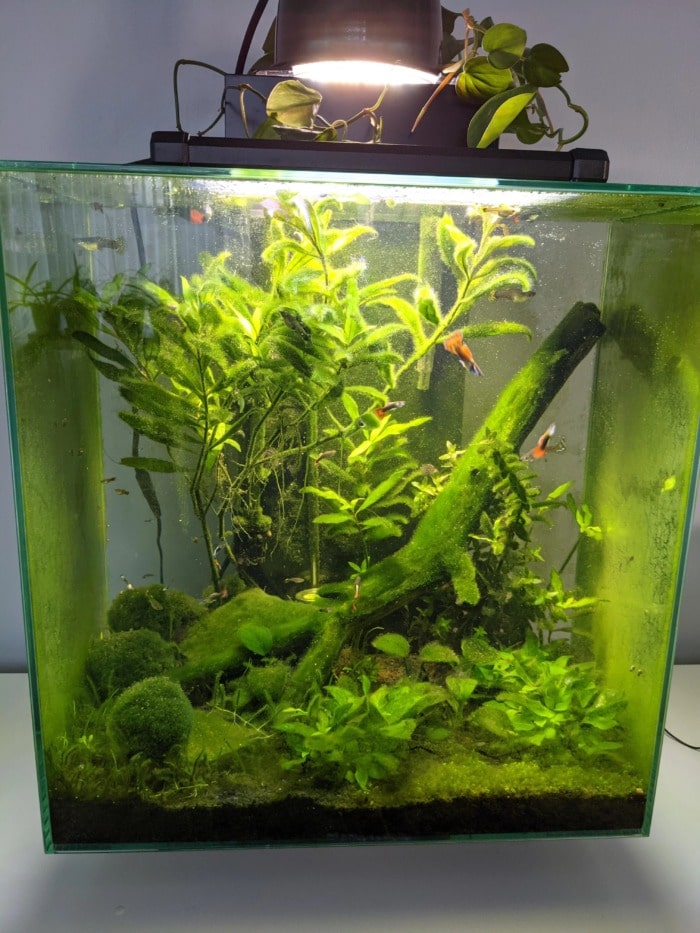
If you’re trying to handle an ammonia spike in your fish tank, you should first do a water change. Theoretically, changing 30% of the water in a fish tank with new, clean water would bring down ammonia by 30%.
With this initial step, you will reduce the levels by physically removing a portion of ammonia and diluting the amount that has built up.
However, the shift in water parameters after a drastic water change may additionally stress out your fish and even kill them. Therefore, I recommend a 30% water change, split into two partial water changes of 15% made 1 to 2 hours apart.
To completely get rid of ammonia, you should repeat this process every day in combination with the steps described below. When your water test kit shows 0 ppm for both ammonia and nitrite you should consider your efforts successful. Once that happens, it means that there’s a working nitrogen cycle in your fish tank.
Author’s note: Some sources suggest doing a 50% water change as a way of fixing abrupt ammonia spikes.
I realize that I recommend replacing a smaller portion of the water.
If you insist, you can do a 50% water change but make sure to spread that out in 3 separate operations, 1 hour apart.
However, the stress caused to your fish by the sudden shifts in water parameters is not the only reason for my recommendation. If you’re performing a water change with tap water, you’ll likely use a conditioner such as Seachem Prime.
Prime removes the Chlorine and Chloramine, utilized by water facilities for disinfection.
Chloramine, which is more commonly used, is actually the chemical bond between ammonia and chlorine. Seachem Prime eradicates the Chlorine and detoxifies the released ammonia into a fish-safe compound – likely ammonium, or something called iminium salts.
However, the detoxification seems to be temporary.
In 24 to 48 hours the detoxifying effect expires and you will have extra tap water ammonia released into your tank.
On top of that, some tap water contains ammonia by default.
This may be the reason why some aquarists report seeing high ammonia levels even after multiple water changes. If this is the cause with your tap water, then using remineralized distilled or RO/DI water for your fish tank may solve the issue.
Anyhow, aquarium test kits don’t differentiate between harmful ammonia and ammonium or iminium salts.
This means that even if your aquarium has a harmless form of ammonia in it, the test kit will still show elevated ammonia levels.
Also, note that the beneficial bacteria do feed on the harmless ammonia compounds but do not prefer them as their primary source of nutrition.
Anyway, all of this isn’t an issue if your tank is fully cycled and stays on the lower end of the PH range.
However, if you’re dealing with an ammonia spike, it may aggravate the situation.
Some beginners add Prime every 1 to 2 days to keep their ammonia issue under control.
This product dependency isn’t ideal as you won’t be naturally lowering the ammonia through a functioning nitrogen cycle.
It also takes way longer to get the situation under control.
Furthermore, you’ll be continuously spending money on aquarium supplements that don’t necessarily fix the problem.
2. Add live nitrifying bacteria.
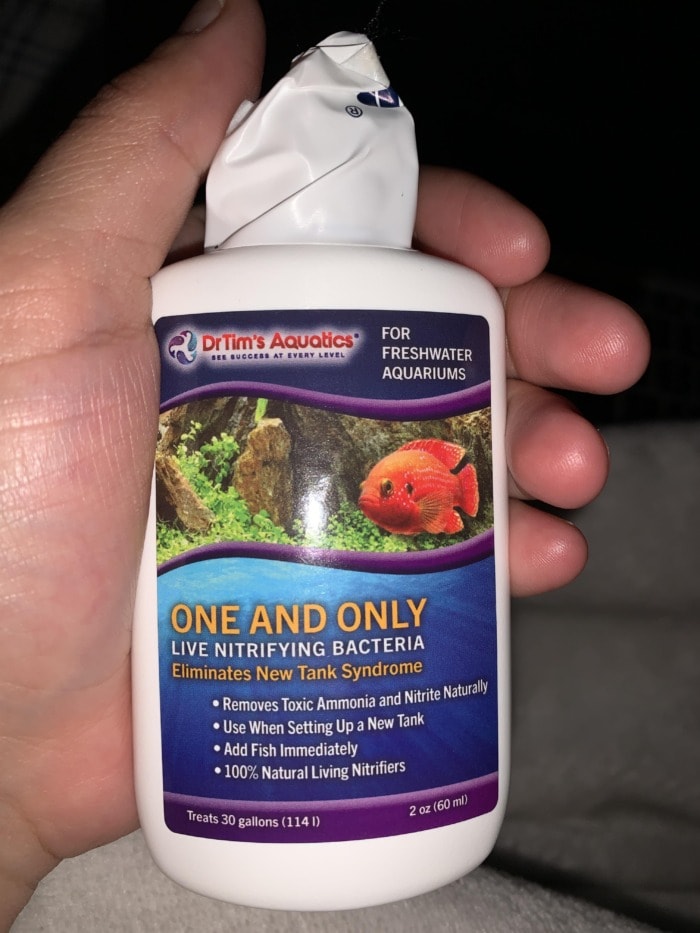
Adding live nitrifying bacteria to the tank should be your second course of action when lowering ammonia levels.
Whether your fish tank is new or you’ve had it for a while, the presence of toxic NH3 is an indication of an incomplete nitrogen cycle.
Naturally, adding bottled bacteria will boost the establishment of an effective biofilter more quickly.
With that being said, it’s essential to choose the right product.
This could be a bit tricky as some companies use cheap-grown, land-based nitrifying bacteria that will die in underwater conditions.
What’s even more concerning is that before they die they’ll outcompete the already-established aquatic bacteria.
So your tank will likely end up with even more ammonia in the end. For your convenience, I’ve made a guide on the aquarium bacteria starters that have helped me immensely when I’ve had to deal with ammonia in my aquariums. In short, I recommend going for API Quick start or Tetra SafeStart Plus for freshwater aquariums, and Instant Ocean BIO-Spira for a saltwater fish tank.
Related Post: API Quick Start vs. Tetra SafeStart.
Anyway, when you’re purchasing a bottle, check out the manufacturing date.
The newer the bottle – the more effective it is.
I’ve found that doubling the recommended API Quick Start dose works best in cases of high ammonia levels in freshwater tanks.
To lower ammonia in saltwater aquariums, I usually add a whole 3.38 Oz bottle of BIO-Spira to treat a 30-gallon tank.
Higher doses of bottled beneficial bacteria are not harmful to fish and invertebrates.
3. Add a water conditioner or ammonia-removing pellets if necessary.
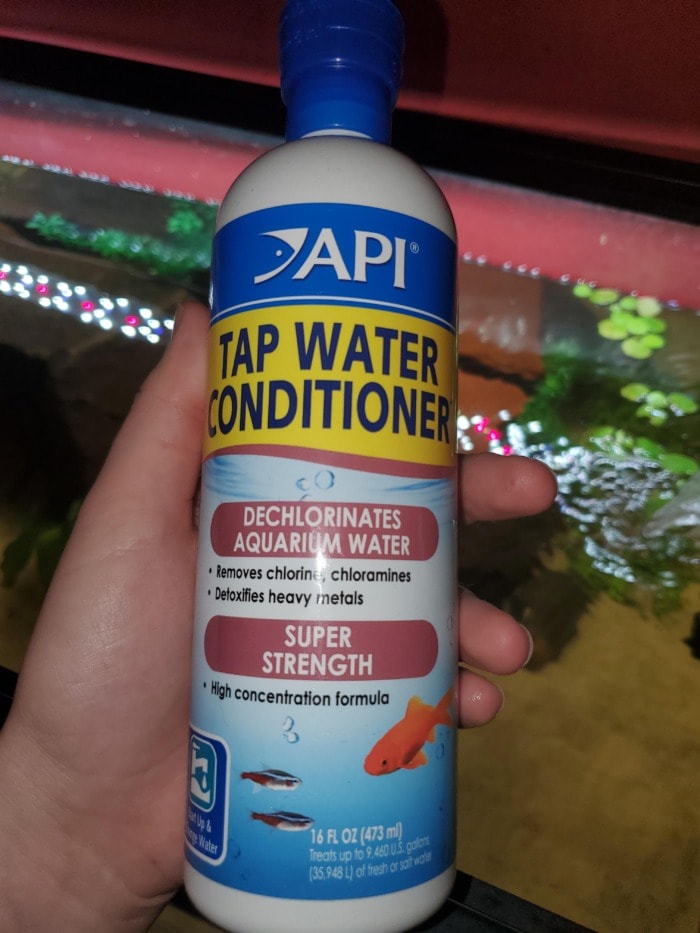
Dosing Seachem Prime or Seachem Safe, as well as ammonia removing pellets such as Api AMMO-Chips, makes sense if the ammonia is very elevated. Fish are in danger if ammonia levels are above 0.25 ppm, but readings that show more than 2.5 ppm may even inhibit the development of beneficial bacteria. In severe cases such as this one, it’s okay to use a water conditioner to offset potential damage to your fish.
The aforementioned products are ideal for bringing the ammonia levels under control and keeping your fish safe while the bacteria multiply and establish themselves.
If you combine this method with adding bottled bacteria, at some point, you won’t have to continue adding conditioners and ammonia-detoxifying pellets.
Eventually, the bacterial growth would be sufficient to handle the released compound timely.
Unfortunately, it will take longer but if you’re faced with such high levels of ammonia you truly have no other choice.
4. Set a filter with porous filter media.

The aquarium’s filter media is one of the main places where beneficial bacteria establish their colonies.
By setting up a filter in your new fish tank you will be providing a surface that the bacteria will happily inhabit. For this reason, the water filter is an essential piece of every fish tank setup.
There are three types of aquarium filters that you can use:
- Canister filters;
- HOB filters;
- Sponge filters.
Hang-on-back (HOB) and sponge filters have a particular advantage in cases of high ammonia levels:
When ammonia degrades it turns into nitrite which is toxic to freshwater fish because it binds with the hemoglobin and blocks its function. Hemoglobin carries oxygen through the body of your fish, which is why they may suffocate even if sufficient oxygen is present.
Filters that disturb the water surface such as the HOB, or the sponge one with its bubbles, will improve the oxygen levels in your aquarium water even further.
That’s because water surface agitation oxygenates the aquarium better.
This will help your pet fish cope with the oxidative stress, caused by nitrite intoxication.
Author’s Tip: To provide more oxygen support to aquarium fish deprived of O2, you can also add an air stone to your tank. Furthermore, nitrifying bacteria need oxygen and alkalinity to function. Insufficient oxygen levels may slow down or even stop the establishment of effective biofilms.
5. Introduce filter media or substrate from a cycled tank.
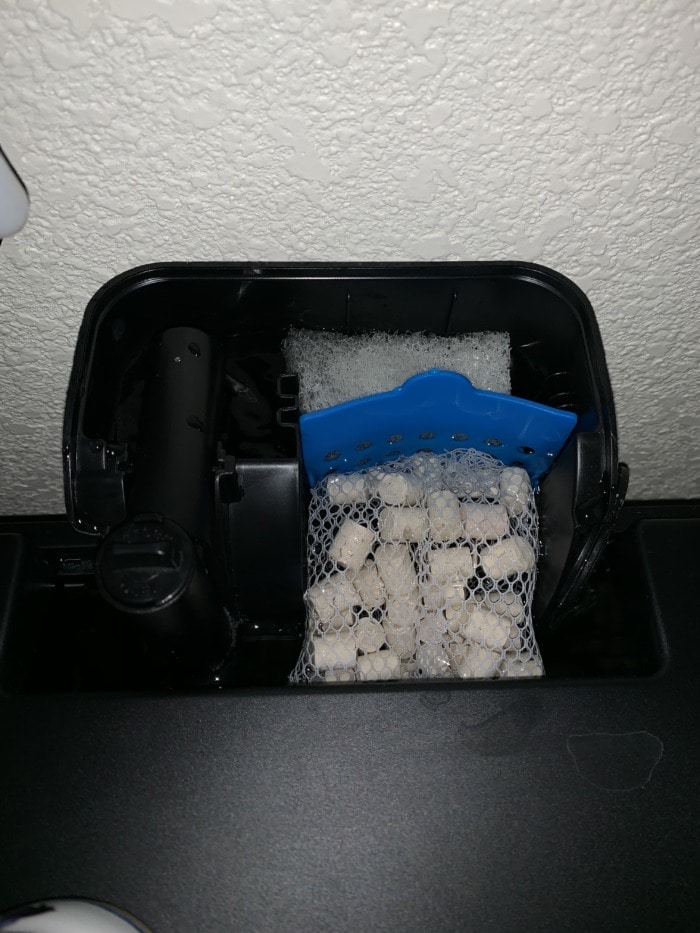
If you or your friends happen to have filter media or substrate from another established tank, you can add a part of it to the ammonia-rich tank.
This works because both the substrate and the filter media of a cycled tank will carry beneficial bacterial colonies that are already established.
This is one of the most effective ways to lower ammonia levels and speed up the establishment of the nitrogen cycle in a natural way.
However, I’m aware that not many beginners own multiple tanks, so using this method may be a bit challenging to some.
6. Throw a floating plant in the tank.

Aquatic plants feed on all kinds of Nitrogen compounds and ammonia is one of those compounds.
Floating plants, unlike underwater plants, have access to atmospheric CO2.
Having a lot of CO2 actually speeds up photosynthesis and therefore plant growth.
For this reason floating plants can act like an ammonia-sucking sponge. They will grow really fast and may reduce the negative impact of the spike. One thing I must mention here is that floating plants tend to take over the aquarium’s surface because most of them are very invasive in nature.
To contain the plant you should put it inside a floating containment ring.
Author’s note: If you have a marine setup you can try connecting a refugium to your main display tank. Throw some live saltwater plants in the refugium – typically macroalgae species – and watch them regulate the water’s parameters. For the best growth and filtering potential you should likely use a dedicated refugium LED light.
7. Skip feeding your fish for two days.
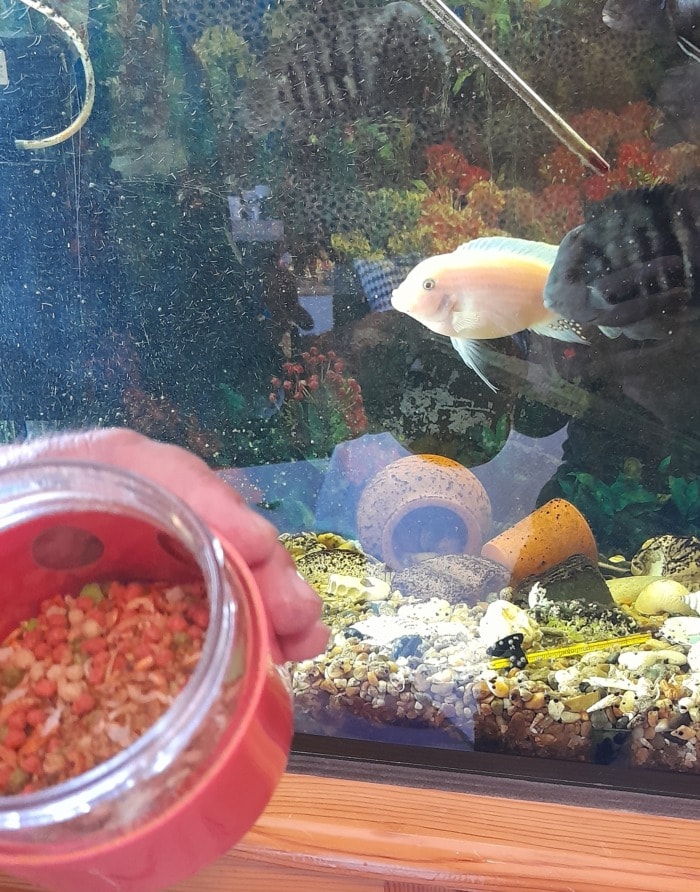
So you’ve already done a partial water change, added beneficial bacteria, and set a filter.
Your next step would be to not feed your fish for two days.
One of the most common causes of high ammonia levels in saltwater and freshwater aquariums is overfeeding.
Even if you’ve followed the previous steps, you may not be able to lower ammonia levels if you’re feeding your fish too much.
You need to know how much your fish can eat at once and how often it can accept food on a daily basis.
A good example here would be Betta fish, as they are some of the most mistakenly overfed fish in the hobby.
The more you feed, the more fish feces, and consequently – higher ammonia levels.
Furthermore, uneaten food leftovers decompose and add to the ammonia spike.
Luckily, most fish can safely go a whole week without eating any food. Skipping a feeding day or two won’t harm your pets and will help you lower ammonia levels faster.
After the initial two days, continue feeding every other day, until your water’s readings show 0 ppm of ammonia.
Once the fish tank’s nitrogen cycle is established, you can go back to your regular fish feeding regimen.
Just make sure you don’t overfeed to avoid ammonia spikes in the future.
Are there visible signs of elevated ammonia contents in a fish tank?

Using a test kit to monitor your fish tank’s water parameters is the most efficient way to detect ammonia spikes in freshwater and saltwater aquariums.
Nevertheless, there are other ways to tell that you need to fix your aquarium’s nitrogen cycle, even without having a test kit around.
Most of these are actually symptoms that your dying fish will express.
So here are the most common visible signs of elevated ammonia in a fish tank:
- Cloudy and smelly aquarium water. The water cloudiness is caused by bacteria that produce ammonia while eating organic matter;
- Lethargic fish that are usually active;
- Fish gasping at the surface of the fish tank;
- Fast movements of the gills and gill inflammation;
- Fish constantly striving to stay near the water surface;
- Fish hostility;
- Fish hiding at the bottom of the tank;
- Fish losing appetite;
- Eye inflammation in some fish;
- Floating snails. In this case the snails don’t feel comfortable within the polluted water and are trying to leave.
How long does it take for ammonia levels to drop in an aquarium?
Ammonia levels will typically go back to normal in 2 – 6 weeks depending on the temperature of the water and the amount of ammonia.
Temperatures below 70°F slow down the growth of beneficial bacteria which in term increases the time it takes to deal with ammonia.
Getting rid of the waste in established tanks, however, takes much less time since they already have established bacterial colonies.
In these cases, it can usually take anywhere from 6 days to 2 weeks for the water to fully clear up.
The process can be especially sped up if you’re adding bottled beneficial bacteria to the tank during the recovery phase.
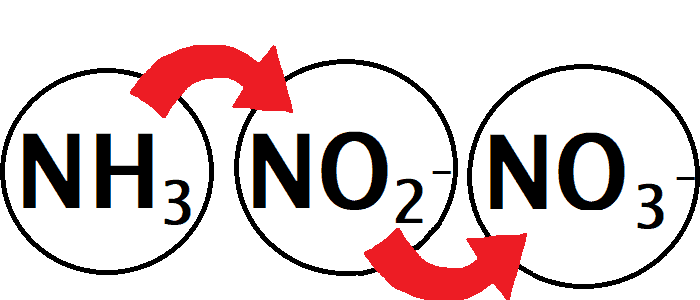
My Conclusion
Whether you have freshwater, saltwater, or a reef aquarium, keeping your ammonia levels down is a matter of keeping your fish tank cycled.
Once you have enough established beneficial bacteria to get your nitrogen cycle going, you just have to sustain it through regular aquarium maintenance.
If you do weekly water changes, avoid overfeeding and overstocking, and keep the pH and temperature within the desired range, you won’t have to worry about bad aquarium water.
I hope that you found my guide helpful! Tell me how things unfolded for your aquarium in the comments.

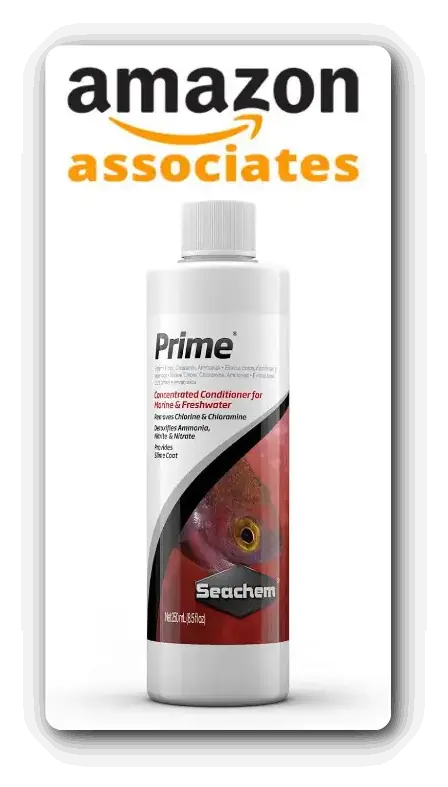
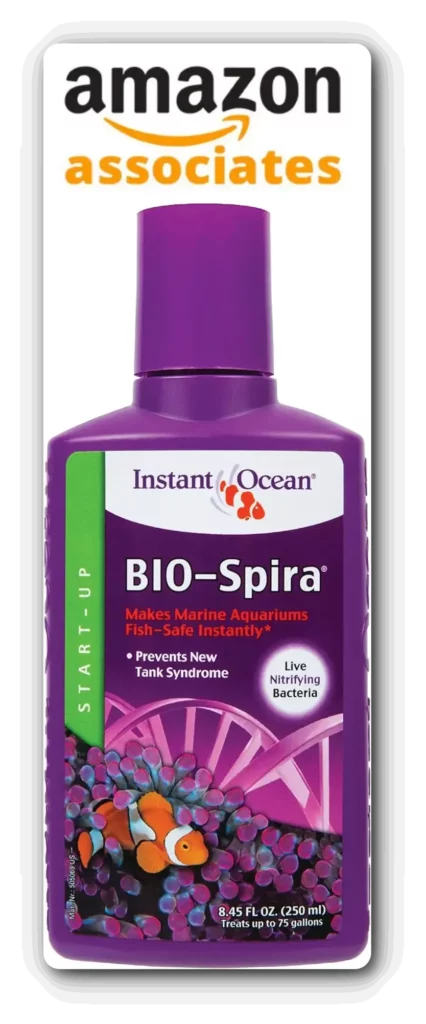



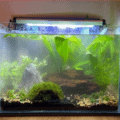


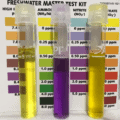






5 thoughts on “How to Lower High Ammonia Levels in Your Aquarium?”